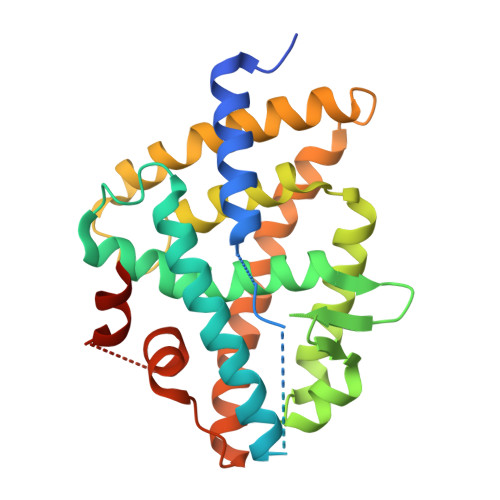Discovery of new LXR beta agonists as glioblastoma inhibitors.
Chen, H., Chen, Z., Zhang, Z., Li, Y., Zhang, S., Jiang, F., Wei, J., Ding, P., Zhou, H., Gu, Q., Xu, J.(2020) Eur J Med Chem 194: 112240-112240
- PubMed: 32248003
- DOI: https://doi.org/10.1016/j.ejmech.2020.112240
- Primary Citation of Related Structures:
6K9G, 6K9H - PubMed Abstract:
Discovery and optimization of selective liver X receptor β (LXRβ) agonists are challenging due to the high homology of LXRα and LXRβ in the ligand-binding domain. There is only one different residue (Val versus Ile) at the ligand-binding pocket of LXRs. With machine learning methods, we identified pan LXR agonists with a novel scaffold (spiro[pyrrolidine-3,3'-oxindole]). Then, we figured out the mechanism of LXR isoform selectivity from co-crystal structures. Based on the mechanism and the new scaffold, LXRβ selective agonists were designed and synthesized. This led to the discovery of LXRβ agonists 4-7rr, 4-13 and 4-13rr with IC 50 values ranging from 1.78 to 6.36 μM against glioblastoma in vitro. Treatment with 50 mg/kg/day of 4-13 for 15 days significantly reduced tumor growth using an in vivo xenograft glioblastoma model.
Organizational Affiliation:
Guangdong Provincial Key Laboratory of New Drug Design and Evaluation, Research Center for Drug Discovery at School of Pharmaceutical Sciences, Sun Yat-Sen University, Guangzhou, 510006, China.



















